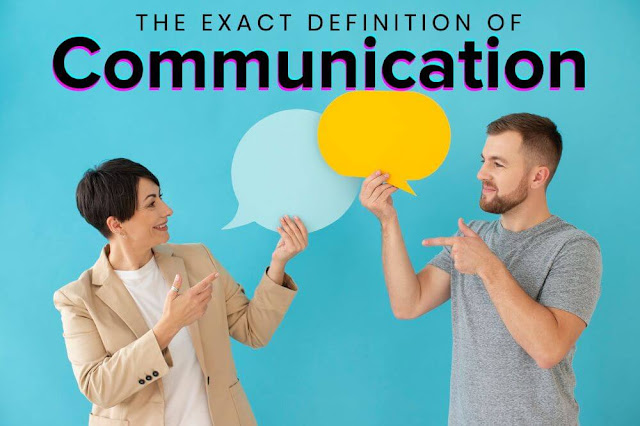The Exact Definition of Communication: A Comprehensive Exploration
Communication is a fundamental aspect of human interaction and the cornerstone of how we convey information, thoughts, emotions, and ideas to one another. It plays a pivotal role in shaping our relationships, sharing knowledge, and fostering understanding. In this comprehensive guide, we will delve into the exact definition of communication, dissecting its components, and understanding its profound significance in our lives.

1. Defining Communication
The Core of Communication
At its core, communication is the process of transferring information, thoughts, feelings, or ideas from one individual or group to another. It is a dynamic and multifaceted exchange that involves a sender, a message, a channel or medium, and a receiver. Each element of this process contributes to the intricate tapestry of human interaction.
Elements of Communication
- Sender:
- The sender serves as the instigator of the communication process. This individual or entity generates the message and intends to convey specific information or emotions to the recipient.
- Message:
- The message is the content being communicated. It can take various forms, including spoken or written words, gestures, facial expressions, images, or even non-verbal cues like body language.
- Channel or Medium:
- The channel or medium serves as the means through which the message is transmitted. It can encompass oral communication, written communication, visual communication, and even digital platforms such as email, social media, or video conferencing.
- Receiver:
- The receiver is the recipient of the message. They decode and interpret the message to extract its intended meaning or significance.
2. The Significance of Communication
Building Relationships
- Communication is the bedrock upon which relationships are built. Whether in personal, professional, or social contexts, effective communication fosters trust, empathy, and connection. It enables individuals to express their feelings, needs, and desires, creating bonds that are essential for human interaction.
Sharing Knowledge
- Communication is the vehicle through which knowledge is transferred from one generation to another and from one individual to their peers. It encompasses educational systems, oral traditions, written records, and the vast digital realm of information sharing. Without communication, the accumulation and dissemination of knowledge would be severely limited.
Facilitating Understanding
- Effective communication is the bridge to mutual understanding. It enables individuals to clarify misconceptions, resolve conflicts, and align their perspectives. By conveying thoughts and emotions accurately, communication mitigates misunderstandings and promotes harmony.
3. Modes of Communication
Verbal Communication
- Verbal communication encompasses the utilization of spoken or written language to transmit messages. It encompasses face-to-face conversations, phone calls, written documents, and various forms of storytelling.
Non-Verbal Communication
- Non-verbal communication relies on cues other than words to express messages. It includes body language, facial expressions, gestures, tone of voice, and even the spatial arrangement of objects in a room.
Visual Communication
- Visual communication employs images, graphics, charts, and other visual aids to convey information. It is often used in advertising, design, and presentations to enhance the impact of a message.
Conclusion
Communication is the lifeblood of human interaction, shaping our relationships, sharing knowledge, and promoting understanding. It transcends linguistic boundaries and encompasses a diverse array of modes and mediums. Understanding the exact definition of communication is not merely an academic pursuit but a key to unlocking effective interaction and meaningful connections in our personal and professional lives. It is the foundation upon which our shared human experience is built, and its mastery is a lifelong journey of growth and enrichment.
